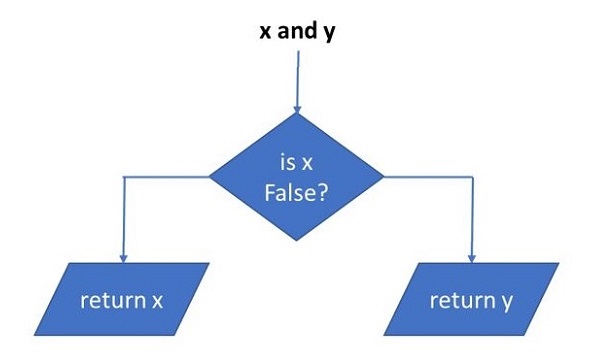Python Bitwise Operators
Python bitwise operators are normally used to perform bitwise operations on integer-type objects. However, instead of treating the object as a whole, it is treated as a string of bits. Different operations are done on each bit in the string.
Python has six bitwise operators – &, |, ^, ~, << and >>. All these operators (except ~) are binary in nature, in the sense they operate on two operands. Each operand is a binary digit (bit) 1 or 0.
The following are the bitwise operators in Python –
- Bitwise AND Operator
- Bitwise OR Operator
- Bitwise XOR Operator
- Bitwise NOT Operator
- Bitwise Left Shift Operator
- Biwtise Right Shift Operator
Python Bitwise AND Operator (&)
Bitwise AND operator is somewhat similar to logical and operator. It returns True only if both the bit operands are 1 (i.e. True). All the combinations are −
0 & 0 is 0 1 & 0 is 0 0 & 1 is 0 1 & 1 is 1
When you use integers as the operands, both are converted in equivalent binary, the & operation is done on corresponding bit from each number, starting from the least significant bit and going towards most significant bit.
Example of Bitwise AND Operator in Python
Let us take two integers 60 and 13, and assign them to variables a and b respectively.
a=60
b=13print("a:",a,"b:",b,"a&b:",a&b)
It will produce the following output −
a: 60 b: 13 a&b: 12
To understand how Python performs the operation, obtain the binary equivalent of each variable.
print("a:",bin(a))print("b:",bin(b))
It will produce the following output −
a: 0b111100 b: 0b1101
For the sake of convenience, use the standard 8-bit format for each number, so that “a” is 00111100 and “b” is 00001101. Let us manually perform and operation on each corresponding bits of these two numbers.
0011 1100 & 0000 1101 ------------- 0000 1100
Convert the resultant binary back to integer. You’ll get 12, which was the result obtained earlier.
>>>int('00001100',2)12
Python Bitwise OR Operator (|)
The “|” symbol (called pipe) is the bitwise OR operator. If any bit operand is 1, the result is 1 otherwise it is 0.
0 | 0 is 0 0 | 1 is 1 1 | 0 is 1 1 | 1 is 1
Example of Bitwise OR Operator in Python
Take the same values of a=60, b=13. The “|” operation results in 61. Obtain their binary equivalents.
a=60
b=13print("a:",a,"b:",b,"a|b:",a|b)print("a:",bin(a))print("b:",bin(b))
It will produce the following output −
a: 60 b: 13 a|b: 61 a: 0b111100 b: 0b1101
To perform the “|” operation manually, use the 8-bit format.
0011 11000000 1101 ------------- 0011 1101|
Convert the binary number back to integer to tally the result −
>>>int('00111101',2)61
Python Bitwise XOR Operator (^)
The term XOR stands for exclusive OR. It means that the result of OR operation on two bits will be 1 if only one of the bits is 1.
0^0is00^1is11^0is11^1is0
Example of Bitwise XOR Operator in Python
Let us perform XOR operation on a=60 and b=13.
a=60
b=13print("a:",a,"b:",b,"a^b:",a^b)
It will produce the following output −
a: 60 b: 13 a^b: 49
We now perform the bitwise XOR manually.
0011 11000000 1101 ------------- 0011 0001^
The int() function shows 00110001 to be 49.
>>>int('00110001',2)49
Python Bitwise NOT Operator (~)
This operator is the binary equivalent of logical NOT operator. It flips each bit so that 1 is replaced by 0, and 0 by 1, and returns the complement of the original number. Python uses 2’s complement method. For positive integers, it is obtained simply by reversing the bits. For negative number, -x, it is written using the bit pattern for (x-1) with all of the bits complemented (switched from 1 to 0 or 0 to 1). Hence: (for 8 bit representation)
-1is complement(1-1)= complement(0)="11111111"-10is complement(10-1)= complement(9)= complement("00001001")="11110110".
Example of Bitwise NOT Operator in Python
For a=60, its complement is −
a=60print("a:",a,"~a:",~a)
It will produce the following output −
a: 60 ~a: -61
Python Bitwise Left Shift Operator (<<)
Left shift operator shifts most significant bits to right by the number on the right side of the “<<” symbol. Hence, “x << 2” causes two bits of the binary representation of to right.
Example of Bitwise Left Shift Operator in Python
Let us perform left shift on 60.
a=60print("a:",a,"a<<2:", a<<2)
It will produce the following output −
a: 60 a<<2: 240
How does this take place? Let us use the binary equivalent of 60, and perform the left shift by 2.
00111100<<2-------------11110000
Convert the binary to integer. It is 240.
>>>int('11110000',2)240
Python Bitwise Right Shift Operator (>>)
Right shift operator shifts least significant bits to left by the number on the right side of the “>>” symbol. Hence, “x >> 2” causes two bits of the binary representation of to left.
Example of Bitwise Right Shift Operator in Python
Let us perform right shift on 60.
a=60print("a:",a,"a>>2:", a>>2)
It will produce the following output −
a: 60 a>>2: 15
Manual right shift operation on 60 is shown below −
00111100>>2-------------00001111
Use int() function to covert the above binary number to integer. It is 15.
>>>int('00001111',2)15

